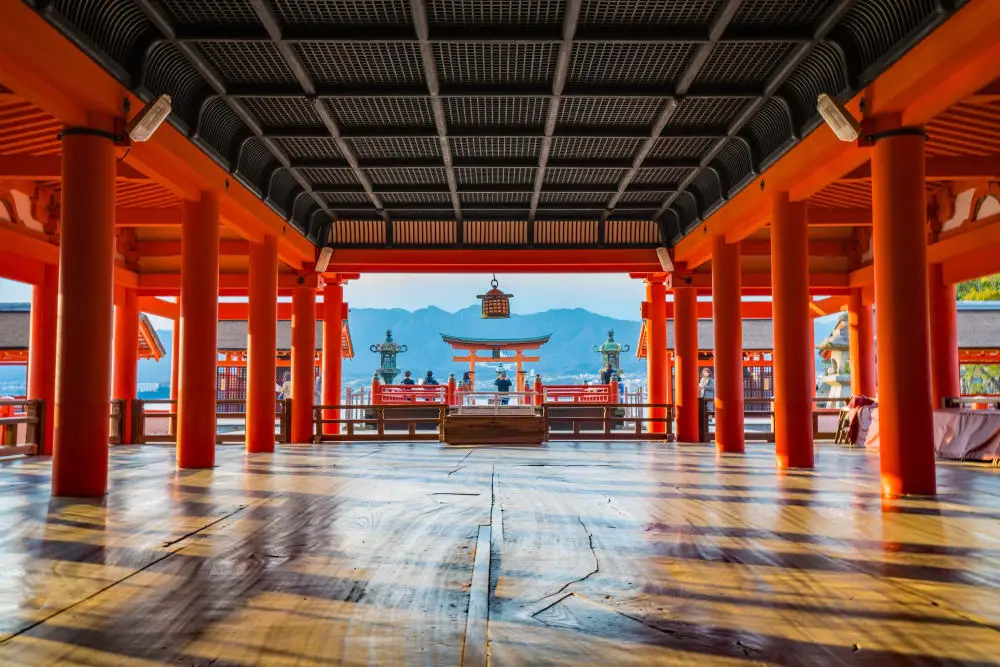Shinto shrines and Buddhist temples are dotted around Japan—but how are they different?
Shrines are built to serve the Shinto religious tradition and are characterized by a torii gate at the entrance. Temples are built to serve the Buddhist religious tradition and are characterized by a sanmon gate at the entrance. Large sanmon gates at temples like the Todaiji Temple in Nara or the Sensoji Temple in Tokyo have impressive roofs and fierce temple guardian statues known as niozo in their columns.
Shrines
Pass through to holy ground
All shrines have a torii gate, even if they do not have a main sanctuary housing the spirit of a deity. A torii gate is the boundary line between holy ground and the secular world. Bowing once in front of the torii gate is the correct—if not always practiced—way to enter. It is customary not to walk through the gate directly in the exact center. Walk through a little to the left or right of the center path.
Purify your hands and mouth
At the temizuya water pavilion located inside the shrine’s grounds, purify your body and mind with water before proceeding to stand in front of the deity. Scoop up water with the provided ladle and rinse your hands and mouth following the steps below (one scoop covers all three steps):
First, scoop up water in a ladle with your right hand and pour water over your left hand.
Next, hold the ladle with your left hand and pour water over your right hand.
Finally, pour some water from the ladle into your left hand, rinse out your mouth, and spit the water out beside the fountain. Never touch the ladle directly to your mouth.
Bowing, clapping and praying
Once you reach the altar, quietly throw a coin into the offering box.
Ring the bell to greet the deity.
Bow twice.
Clap your hands twice, expressing your joy and respect towards the deity.
Say a prayer with your hands still together.
Bow one more time.
Temples
A place of peace, incense, and purification
Temples are not as strict as shrines in terms of prayer ritual. However, please behave in a calm and respectful manner. If a temple has a temizuya, purify your hands and mouth in the same way you would at a shrine and head to the altar.
Many temples have incense (osenko)—you can purchase a bundle by putting a coin in the offering box. After lighting the incense and extinguishing the flame by waving your hand (rather than blowing it out with your mouth), put it in the incense burner and join your hands in silent prayer. You may see many visitors fanning smoke towards their bodies, which is believed to have healing powers. There is no need to clap your hands.
Be respectful
You may be required to take off your shoes when entering temple buildings. Leave your shoes on the shelves at the entrance or take them with you in plastic bags provided at some temples. Don’t forget to wear a good pair of socks. Watch out for signs where photography is forbidden inside temples.


